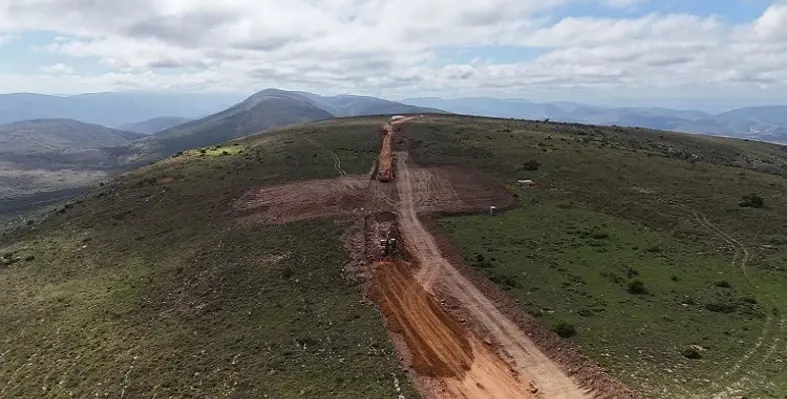Concor Construction, a diversified infrastructure and construction services company, has announced that work is progressing well on the Wolf Wind Farm project in South Africa
The company has been contracted to carry out the civil balance of the plant which will contribute 84MW of energy into the country’s grid when it comes online from 2025. This scope of work includes an innovative design for a steeply inclined concrete road to the site and will see Concor build 17 foundation bases for wind turbine generators on a ridge in the Klein Witerhoek mountain range. It is being delivered for Red Rocket, a fully integrated African independent power producer, and is being tackled in a consortium with Murray & Roberts company OptiPower.
Stephen Nel, Concor contracts manager and lead project manager for the consortium, described the project in more detail, noting that the bases are for two sizes of turbines. There will be five 6.2MW Vestas V162 turbines and twelve 4.5MW V163 models.
Nel explained, “The foundation bases for V162 turbines measure 22.5 m in diameter, while the V163 foundations are 21.2 m. The larger bases will consume over 650 cu/m of concrete each, with the slightly smaller bases taking almost 600 cu/m.”
For the excavations, Concor has reported that it will be conducting more than 180,000 cu/m of bulk earthworks for the base excavations and roadways on site. This includes 15 km of access road to reach the wind turbines. In addition, 100,000 cu/m of rock will be blasted during the construction of the project and, after cleaning, a concrete lining will be applied and specially designed anchor cages of steel reinforcing bars.
To deliver the project, Concor is having to navigate a number of unique challenges such as the concrete from the batch plant having to traverse an 18% incline gradient to reach the top of the ridge where the turbines will be located.
Nel discussed how they have sought to solve this issue, “In collaboration with the client, consultants and specialist service providers, we designed a concrete roadway that could be constructed using the slip-form method. The 1,100 m roadway, measuring 7 m wide, was completed in January this year, paving the way for the on-schedule execution of the project.”
In constructing the road Concor had to contend with designing a concrete mix with a 35 slump to prevent the poured concrete from moving on the slope, an issue exacerbated by high daytime temperatures above 36 degrees Celsius.
“After considerable planning, investigation and trialling, a solution was developed to allow the slip-form paver and the cement trucks to operate on the steep incline, and to lay down the concrete road as planned,” added Nel. “The road was continuously poured at an advance rate of about 200 m a day, consuming some 1,600 cu/m of concrete – reinforced with anchor beams and intermittent steel bars.”






